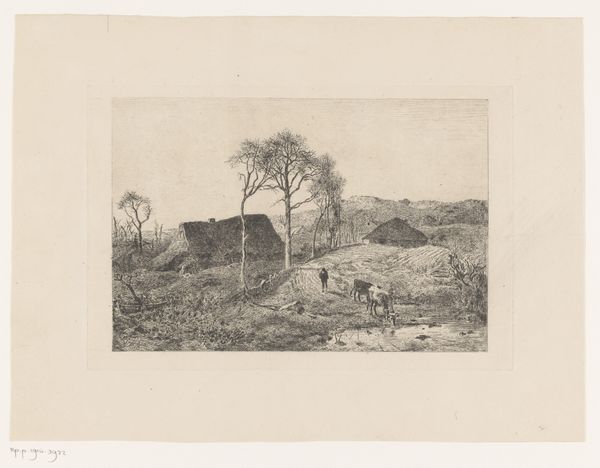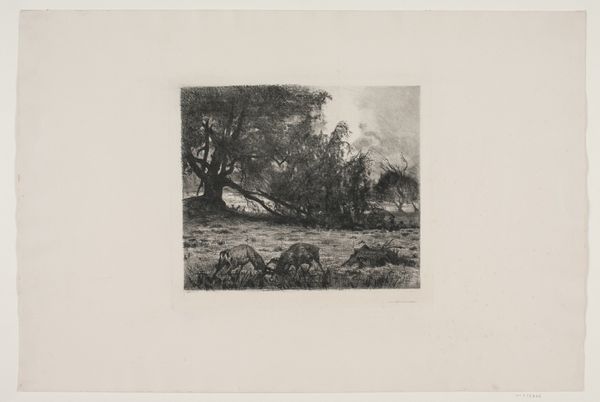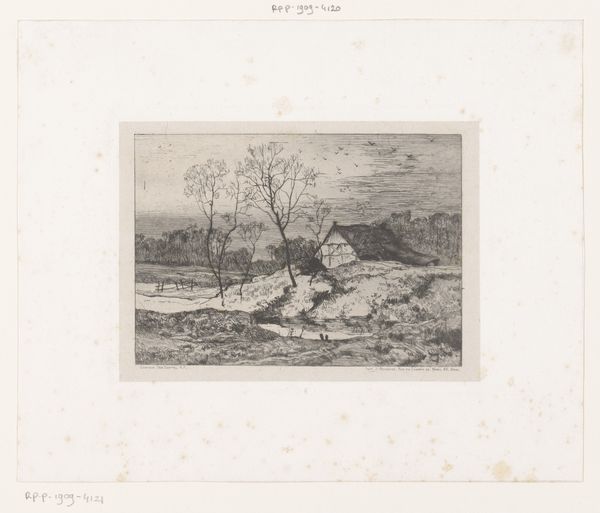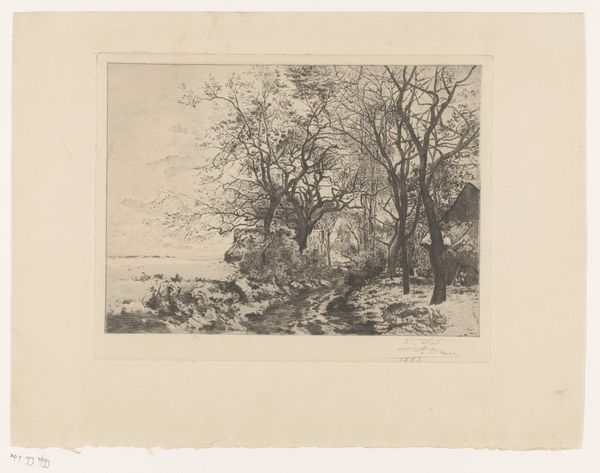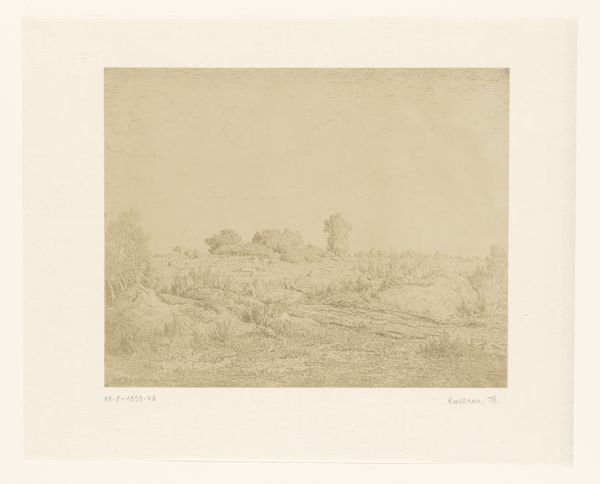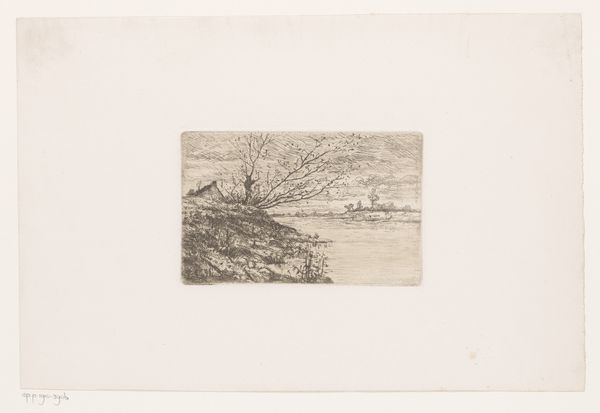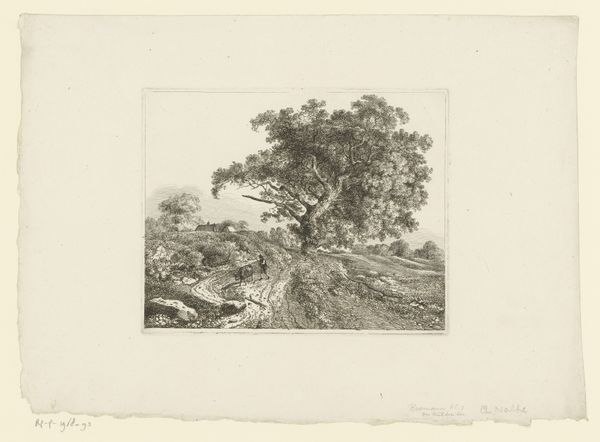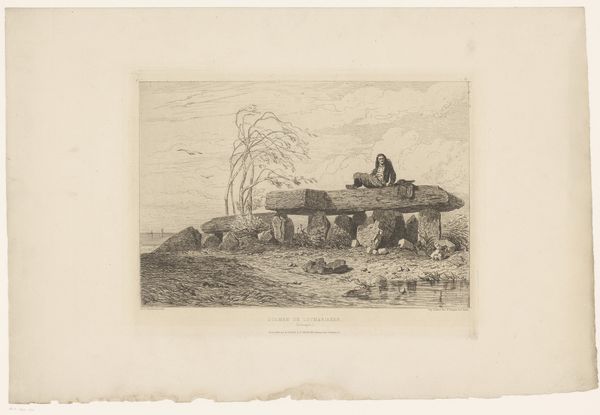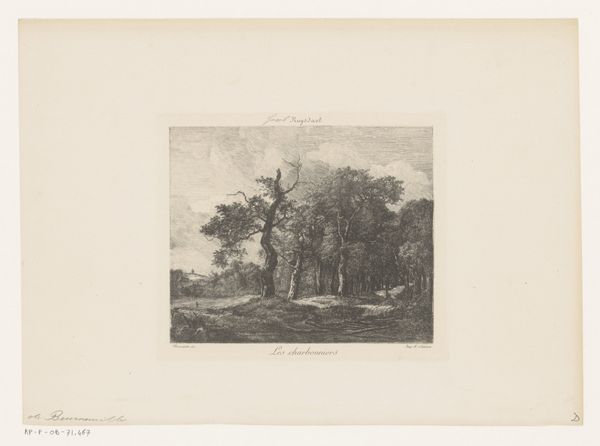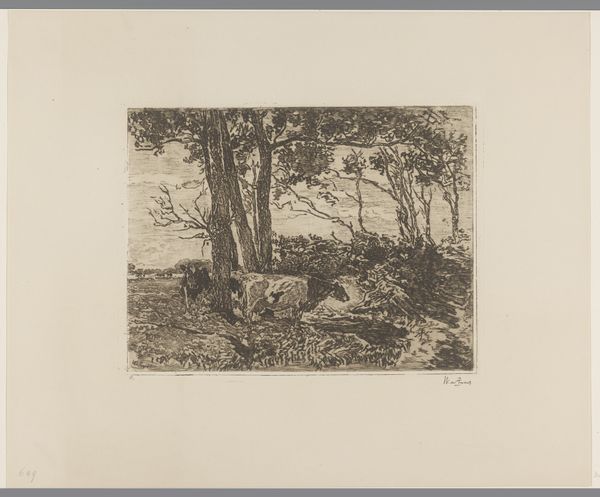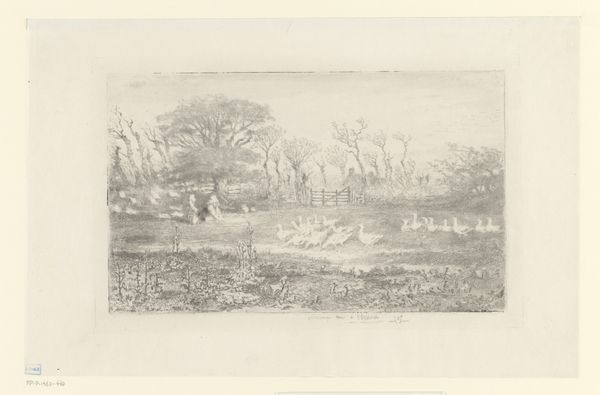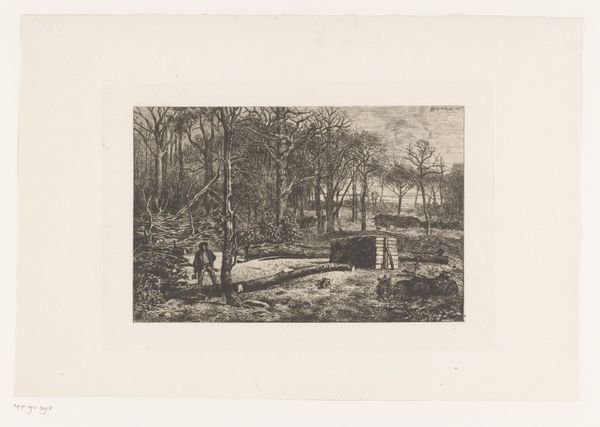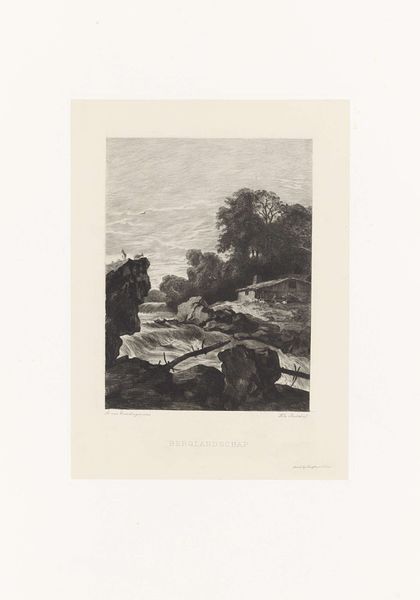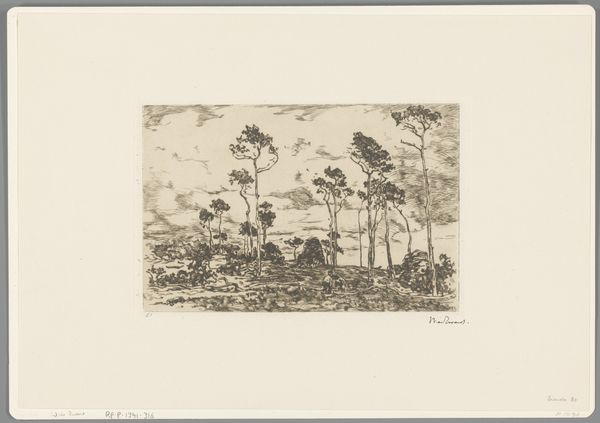
print, etching
#
16_19th-century
# print
#
etching
#
landscape
#
genre-painting
#
realism
Dimensions: height 199 mm, width 296 mm
Copyright: Rijks Museum: Open Domain
Curator: This is a print titled “Drinkende koe in een landschap met boerderijen”, or “Drinking Cow in a Landscape with Farmhouses,” made between 1830 and 1910 by Lambert Jacquelart. It’s an etching on paper, showcasing Jacquelart’s skill in rendering rural life. Editor: There’s an incredible stillness in this landscape. The delicate lines create such a soft light. It feels like time is almost standing still in this quiet pastoral scene. Curator: That's an interesting take. Jacquelart created this piece within a time of massive social change in Europe, industrialization, and urbanization were drawing people away from rural life, but artwork romanticized the rural landscape. Editor: Absolutely. There’s this real feeling of harmony between the farmhands and animals. Is this, perhaps, a comment on a societal shift? A nod toward working-class concerns? It reads to me as Jacquelart showcasing those actively creating, living, and being, set against industrial modernity. Curator: Perhaps. The scale and material would dictate that its purpose was far more widespread, intended to democratize artwork to reach a growing middle class with different consumption habits. Also, it draws from the 17th century, where similar scenes are laden with allegories concerning labor, class, and wealth. I would expect nothing less from the Realism movement from which Jacquelart borrows, however, in some sense this particular image has none of these earlier nuances, existing simply as an interpretation of real life and landscape. Editor: That might be true. What is interesting, then, is the cow. If it really has nothing to say beyond reality, then what about non-human labor? Who are the subjects? Is it perhaps a pre-ecocritical lens on landscape? Curator: The late 19th century was a key period in the formulation of natural science as we understand it today, so an ecocritical read isn’t necessarily off base. This scene evokes such an ordinary moment, the cow drinking from the water... This focus perhaps elevated to the importance of livestock as more than commodities. Editor: Well, perhaps it's naive to overemphasize some radical intent, it certainly gave me something to reflect on. What do you make of Jacquelart’s legacy overall? Curator: He might be one of many artists capturing the transition from the old to the new world during the industrial revolution, with a vision far broader than perhaps the aesthetic quality of Realism from which he borrows.
Comments
No comments
Be the first to comment and join the conversation on the ultimate creative platform.
